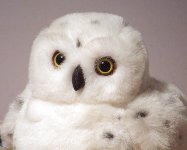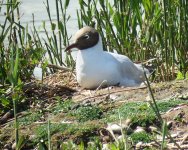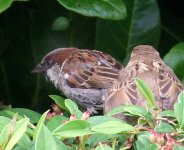NoSpringChicken
Well-known member

I recently bought a Nikon ED50 scope with a 13-40 zoom lens to use with my Fuji F30 for digiscoping. The first results were very promising but I took it out on Sunday on a nice, bright day and only achieved a couple of shots which weren't a complete disaster.
The scope zoom was at its widest setting and I had the camera in Aperture Priority mode with the aperture also at its widest. The ISO was set to 200 or 400 but most of the photos were taken at f/5.0 with a shutter speed of 1/80 -1/180 second. This meant that most of them were blurred and, strangely, were underexposed too
I was also having problems with the autofocusing. I was focusing the scope by eye first, then swinging the camera into position and half pressing the shutter button to focus the camera. Much of the time the camera wouldn't focus, however, and red AF warning appeared. Moving the camera and scope to select different parts of the image made no difference. On the other hand another subject would focus straight away with no problems. I had the camera set to 'Macro' mode with the focus assist switched off.
I am beginning to think that the 50mm scope and zoom lens are not really bright enough to allow fast shutter speeds at lower ISO settings and this is also upsetting the camera autofocusing.
Sorry for the wordy post but any theories?
Ron
The scope zoom was at its widest setting and I had the camera in Aperture Priority mode with the aperture also at its widest. The ISO was set to 200 or 400 but most of the photos were taken at f/5.0 with a shutter speed of 1/80 -1/180 second. This meant that most of them were blurred and, strangely, were underexposed too
I was also having problems with the autofocusing. I was focusing the scope by eye first, then swinging the camera into position and half pressing the shutter button to focus the camera. Much of the time the camera wouldn't focus, however, and red AF warning appeared. Moving the camera and scope to select different parts of the image made no difference. On the other hand another subject would focus straight away with no problems. I had the camera set to 'Macro' mode with the focus assist switched off.
I am beginning to think that the 50mm scope and zoom lens are not really bright enough to allow fast shutter speeds at lower ISO settings and this is also upsetting the camera autofocusing.
Sorry for the wordy post but any theories?
Ron






